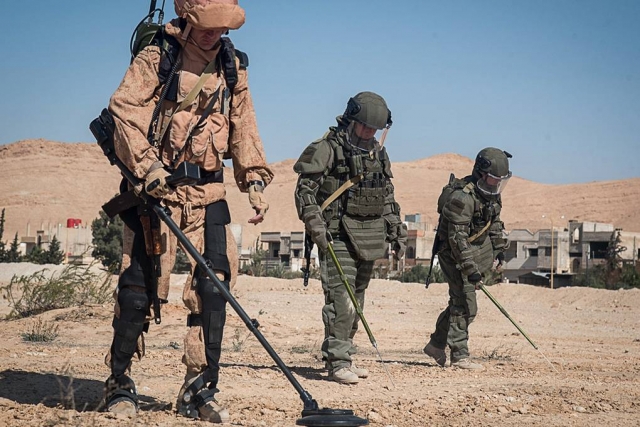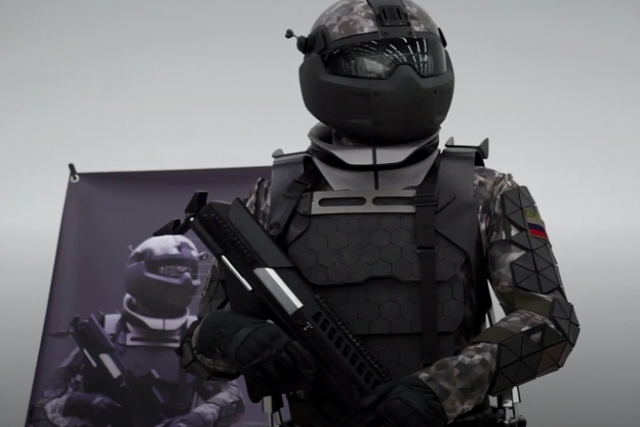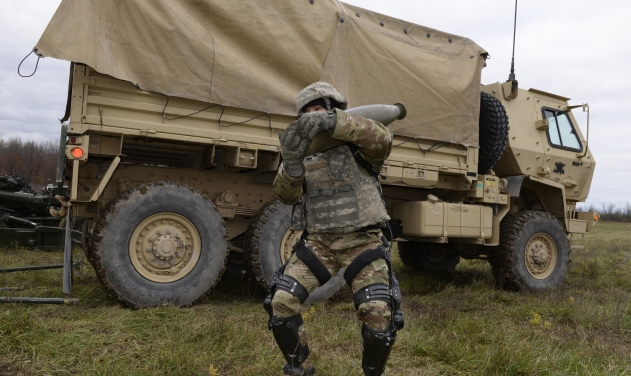Rostec Releases Video of Soldier Exoskeleton That Was Tested in Syria

Russia’s Rostec has released a video of a passive exoskeleton that enables a soldier to run faster and carry heavier loads than those without them.
The Exoskeleton EO-1 was tested under combat conditions in Syria. The troops had conducted mine-clearing operations in March-April 2017 Palmyra.
The first sample of Russia’s first-ever passive exoskeleton was tested at Karbyshev Institute in 2015. Government certification tests were to be completed by late 2019, TASS had reported last year.
The video released on Monday portrays a soldier in full combat gear moving across rugged terrain, running, squatting, jumping onto a high platform, getting into a motor vehicle and ascending a stairway. "The exoskeleton is hidden beneath the clothes and gear. It does not hinder the soldier's movements, but on the contrary eases the strain on the locomotor system. It allows for easily carrying up to 60kg of combat equipment and weapons, while its own weight is 6kg," Rostec explains in the video.

Unlike active exoskeletons, passive exoskeletons have no power sources, servomotors, electronics or sensors.
Rostec said it could be an integral part of the third generation combat gear Sotnik. In Russia’s engineering forces the exoskeleton is used by the operators of the mine-clearing Robot Uran-6. The robot’s command and communication panel weighs about 20kg.
The Exoskeleton EO-1 protection for the joints and spine and is adjustable to the height and build of each individual soldier. It is well-adjusted to the musculoskeletal system of the human body. In static condition it eases the load on the legs and back to a point where the weight of one’s own body stops to be felt.

TsNIITochMash Exoskeleton
A Rostec subsidiary TsNIITochMash in December 2019 said it is working on the Sotnik future combat gear. The company added that serial production of passive unpowered exoskeletons for carrying heavy weights would begin in about 2-3 years. Manufacturing of active exoskeletons is expected to commence in about 4-6 years.
Lockheed Martin’s ONYX Exoskeleton
ONYX is a powered, lower-body exoskeleton with artificial intelligence (AI) technology that augments human strength and endurance. It counteracts overstress on the lower back and legs. Using electro-mechanical knee actuators, a suite of sensors and an AI computer, ONYX learns user movements and delivers torque to assist with walking up steep inclines, lifting or dragging heavy load.










